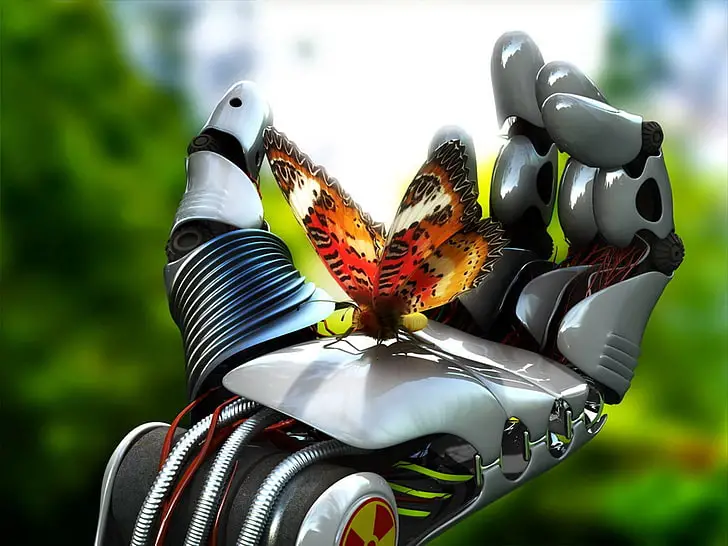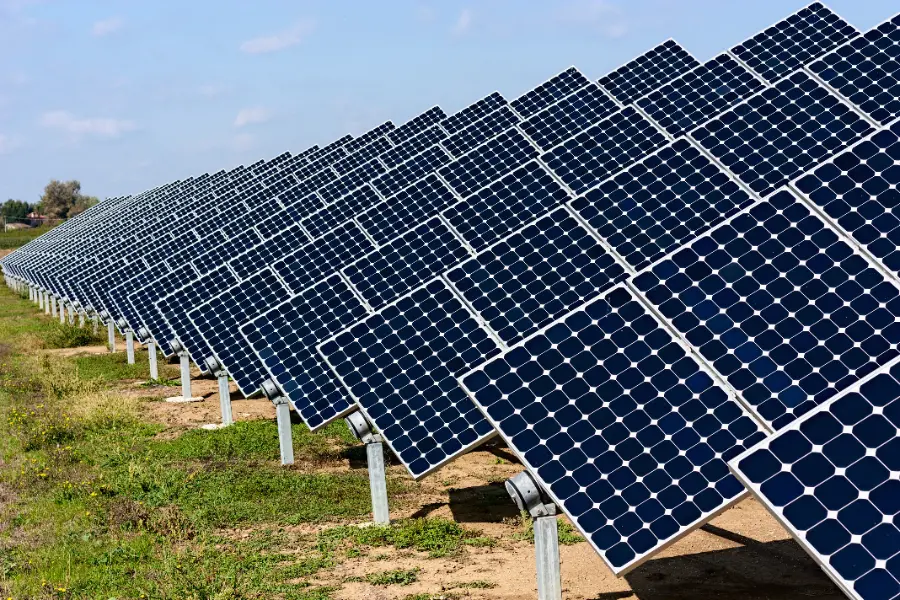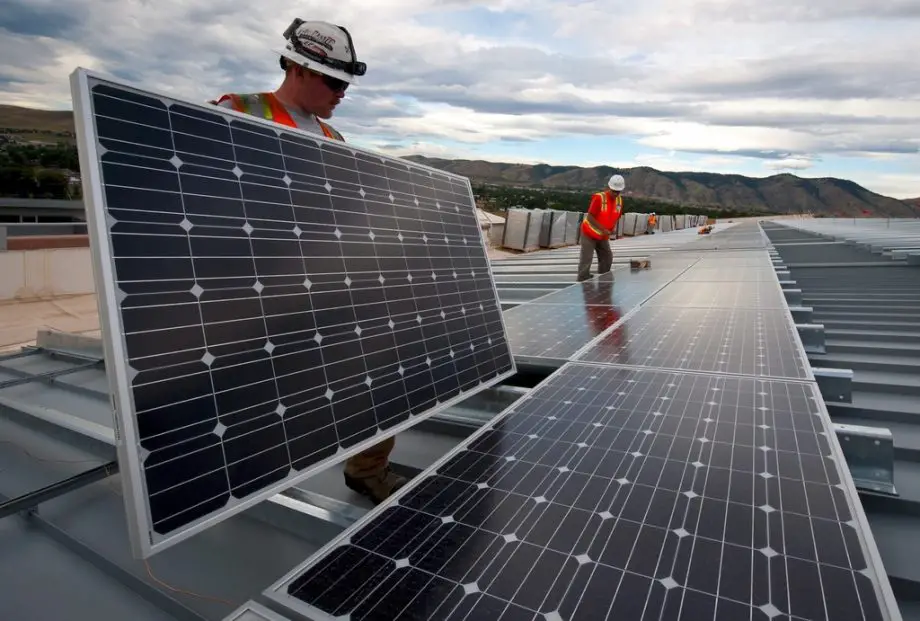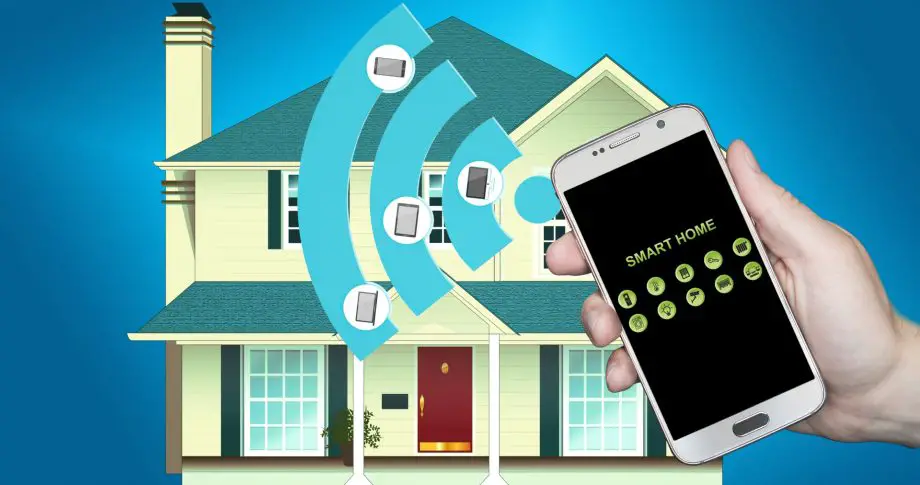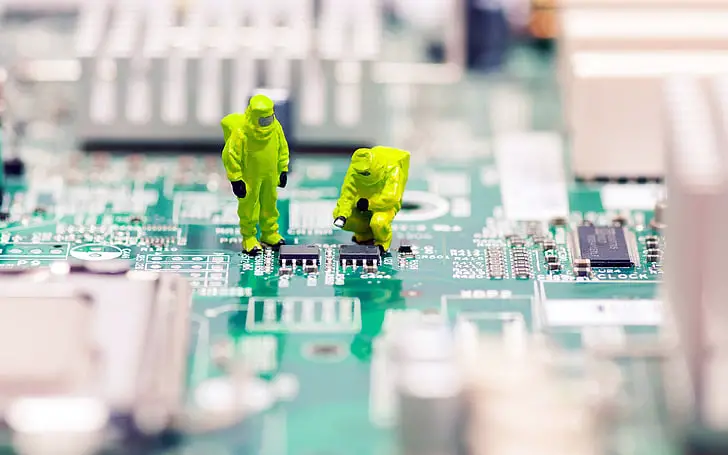
Explore the transformative power of green technology and its effect on climate change. Join us as we delve into sustainable solutions for a greener future!
Ever wondered about the power of innovation in shaping our world?
Well, let’s dive into the fascinating realm of green technology and its effect on climate change.
This isn’t just about science and statistics. It’s about our future, our planet, and how we can harness the power of technology to make a real difference.
So, buckle up and get ready for an enlightening journey into the world of sustainable solutions and their transformative impact on our climate!
Green Technology and its Effect on Climate Change
Today, we’re embarking on a journey to explore the intriguing intersection of green technology and its effect on climate change.
We’ll be unraveling the mysteries of renewable energy sources, diving deep into the world of sustainable design, and even tackling the challenges that come with implementing these eco-friendly innovations.
From understanding the economic implications to answering your burning questions, this comprehensive guide covers it all.
So, sit back, relax, and let’s delve into the captivating world of green technology and its pivotal role in combating climate change!
Definition of Green Technology
Let’s kick things off by demystifying what we mean when we say ‘green technology’.
Picture this: a world where the products we use and the energy we consume are designed to minimize harm to our environment.
That’s the essence of green technology!
It’s all about environmentally friendly methods, materials, and processes that help us reduce waste, conserve natural resources, and lessen our carbon footprint.
From solar panels on our rooftops to recycling programs in our communities, green technology is all around us, working silently to protect our precious planet.
Brief Overview of Climate Change
Now, let’s switch gears and talk about a term that’s been making headlines for quite some, time climate change.
Climate change refers to significant changes in global temperatures and weather patterns over time.
It’s like Mother Nature’s mood swings on a grand scale, but these aren’t just random fluctuations.
They’re primarily driven by human activities, especially the release of greenhouse gases like carbon dioxide and methane.
The consequences? Rising global temperatures, melting ice caps, extreme weather events and the list goes on.
It’s a complex issue with far-reaching impacts on our planet and our lives.
The Connection between Green Technology and Climate Change
So, how does green technology fit into the climate change puzzle?
Think of green technology as our secret weapon in the fight against climate change.
By promoting sustainable practices and reducing our reliance on fossil fuels, green technology helps us mitigate the effects of climate change.
It’s like a superhero swooping in to save the day, except this superhero uses renewable energy and sustainable design instead of capes and superpowers!
Whether it’s harnessing the power of the sun to generate electricity or designing buildings that use energy more efficiently, green technology offers innovative solutions to some of our most pressing environmental challenges.
The Impact of Green Technology on Climate Change
Ready to dive deeper? Let’s turn our attention to the real game-changer: the impact of green technology on climate change.
It’s like a ripple effect, where small changes can lead to big results.
Imagine reducing our carbon emissions, transforming our economies, and even reshaping our cities all thanks to green technology.
It’s not just about saving the planet it’s about creating a sustainable future where we can all thrive.
So, let’s roll up our sleeves and delve into the transformative power of green technology and its pivotal role in our fight against climate change!
How Green Technology Helps in Reducing Carbon Emissions
Let’s start with a biggie: carbon emissions. You know, those pesky greenhouse gases that are a major contributor to climate change.
Here’s where green technology steps in like a breath of fresh air. By harnessing renewable energy sources like wind, solar, and hydropower, we can generate electricity without burning fossil fuels, which are a major source of carbon emissions.
Plus, green technology isn’t just about energy production. It also includes innovations like electric vehicles and energy-efficient appliances that help us reduce our carbon footprint in our everyday lives.
It’s like giving Mother Earth a much-needed break!
The Role of Green Technology in Sustainable Development
Next up, let’s talk about sustainable development. This is all about meeting our needs without compromising the ability of future generations to meet theirs.
It’s a delicate balancing act, and green technology is right at the heart of it.
From sustainable agriculture practices that protect our soil and water to green building designs that reduce energy consumption, green technology helps us create a more sustainable, eco-friendly world.
It’s like building a bridge to a greener future, one innovation at a time.
Case Studies of Green Technology Mitigating the Effects of Climate Change
Now, let’s bring this to life with some real-world examples. Around the globe, green technology is making a difference in the fight against climate change.
Take Denmark, for instance, a country that’s leading the charge in wind energy.
Or consider the city of Freiburg in Germany, known for its solar-powered homes and commitment to sustainable living.
And let’s not forget about the companies turning waste into resources like the Japanese firm turning old clothes into fuel.
These aren’t just isolated examples; they’re proof that green technology isn’t just a concept.
It’s a powerful tool that’s already helping us combat climate change.
Types of Green Technologies and Their Effects
Alright, we’ve talked about the ‘why’, now let’s get into the ‘what’. What exactly are these green technologies we keep mentioning?
Well, they’re as diverse as the colors in a rainbow, each with its own unique benefits and applications.
From harnessing the power of the sun and wind to designing buildings that are friends with nature, green technologies are transforming the way we live, work, and play.
So, let’s put on our explorer hats and embark on a journey through the diverse landscape of green technologies and their incredible effects on our world!
Renewable Energy Sources (Solar, Wind, Hydro, and Geothermal Energy)
Let’s start our exploration with the stars of the green technology show: renewable energy sources.
Picture this: a world powered by the sun, the wind, the water, and the heat from deep within the Earth.
Sounds like a dream, right? But with green technology, it’s becoming a reality.
Solar panels convert sunlight into electricity, wind turbines harness the power of the wind, hydroelectric systems use flowing water to generate power, and geothermal systems tap into the Earth’s internal heat.
It’s like tapping into nature’s own power grid, providing us with a constant, sustainable source of energy.
Green Building and Sustainable Design
Next, let’s talk about where we live and work: our buildings.
Green building and sustainable design are all about creating structures that are energy-efficient, water-efficient, and environmentally friendly.
Think buildings with solar panels on the roof, rainwater harvesting systems, and walls that keep the heat in during winter and out during summer.
It’s not just about the buildings themselves, but also about where they’re located.
Sustainable design also involves creating communities where people can live, work, and play without having to rely on cars.
It’s like building a future where our homes and offices are part of the solution, not the problem.
Waste Management and Recycling
Now, let’s move on to a topic that’s often overlooked: waste.
With green technology, waste isn’t just something to be disposed of; it’s a resource to be used.
Recycling programs turn waste into raw materials for new products, reducing the need for new resources and the amount of waste that ends up in our landfills.
And it’s not just about recycling. Green technology also includes composting, which turns organic waste into nutrient-rich soil, and waste-to-energy technologies, which convert waste into electricity.
It’s like giving waste a second life, turning what was once a problem into a solution.
Water Purification Systems
Last but not least, let’s talk about water. Clean, safe water is essential for life, but it’s a resource that’s becoming increasingly scarce.
That’s where green technology comes in. Water purification systems use a variety of technologies to remove contaminants from water, making it safe to drink.
Some systems use membranes to filter out particles, while others use biological processes to remove harmful chemicals.
There are even systems that can turn seawater into freshwater! It’s like having a mini water treatment plant in your home, ensuring you always have access to clean, safe water.
Challenges and Opportunities in Implementing Green Technology
Alright, we’ve seen the amazing potential of green technology, but let’s not sugarcoat it. It’s not all smooth sailing.
Like any major change, implementing green technology comes with its own set of challenges.
With every challenge comes an opportunity for innovation and growth.
So, let’s roll up our sleeves and dig into the nitty-gritty of the challenges we face in implementing green technology, and more importantly, the exciting opportunities that lie ahead.
Ready? Let’s dive in!
Economic and Technical Challenges
First up, let’s talk about the economic and technical challenges.
Green technology is a rapidly evolving field, and keeping up with the pace of innovation can be a challenge.
It requires significant investment in research and development, and the technologies themselves can be expensive to implement.
Plus, there’s the technical challenge of integrating these new technologies into our existing infrastructure.
It’s like trying to change the tires on a car while it’s still moving – tricky, but not impossible!
Policy and Regulatory Challenges
Next, let’s delve into the world of policy and regulation.
Implementing green technology isn’t just a technical challenge; it’s also a policy challenge.
Governments play a crucial role in promoting green technology through policies and regulations.
But creating the right policy environment can be complex.
It involves balancing the needs of different stakeholders, managing the transition for industries that are heavily reliant on fossil fuels, and ensuring that the benefits of green technology are shared equitably.
It’s like navigating a maze, where every decision can have far-reaching impacts.
Opportunities for Innovation and Growth
Now, let’s flip the coin and look at the opportunities.
Yes, implementing green technology is challenging, but it’s also a huge opportunity for innovation and growth.
It’s a chance to develop new technologies, create new jobs, and build a more sustainable economy.
Plus, it’s an opportunity to reduce our environmental impact and make our communities more resilient to the impacts of climate change.
It’s like opening a door to a future where our economy and our environment go hand in hand.
And the best part? We’re just getting started!
The Future of Green Technology in Climate Change Mitigation
Are you ready to take a peek into the future? As we continue our journey, we’re now going to explore the exciting potential of green technology in mitigating climate change.
It’s like gazing into a crystal ball, but instead of vague predictions, we’re looking at tangible, science-backed solutions that can shape our world for the better.
From emerging trends to policy shifts, we’re about to delve into how green technology is set to transform our future.
So, fasten your seatbelts, and let’s zoom into the future of green technology!
Predictions and Trends in Green Technology
First off, let’s gaze into that crystal ball and talk about predictions and trends in green technology.
It’s an exciting time, with new innovations popping up like mushrooms after a rainstorm.
We’re seeing trends like the rise of electric vehicles, the growing popularity of solar and wind energy, and the development of smart grids that can manage energy use more efficiently.
And let’s not forget about the growing trend of green buildings that are not just energy-efficient, but also designed to improve our health and wellbeing.
It’s like we’re on a rollercoaster ride, and these trends are taking us toward a future where green technology is the norm, not the exception.
The Role of Policy and Regulation in Promoting Green Technology
Next, let’s talk about the role of policy and regulation.
Governments have a crucial role to play in promoting green technology.
Whether it’s by setting ambitious climate targets, providing funding for research and development, or creating incentives for businesses and individuals to adopt green technologies.
It’s like the conductor of an orchestra, guiding and coordinating the different players to create a harmonious symphony of sustainable development.
Potential Impact on Various Sectors (e.g., Energy, Construction, Transportation)
Finally, let’s look at the potential impact of green technology on various sectors.
The energy sector is an obvious one, with renewable energy technologies transforming the way we generate and consume electricity.
But the impact of green technology goes beyond energy. In the construction sector, green building technologies are creating buildings that are not just energy-efficient, but also healthier and more comfortable to live in.
And in the transportation sector, technologies like electric vehicles and biofuels are reducing our reliance on fossil fuels.
It’s like a ripple effect, where the impact of green technology spreads out to touch all corners of our economy and society.
Green Technology and its Effect on Climate Change FAQs
Now, let’s switch gears a bit and address some of the burning questions you might have about green technology and its role in climate change.
We’ve covered a lot of ground, and it’s only natural to have a few queries popping up in your mind.
From understanding the role of green technology in combating climate change to exploring its potential for economic growth, we’re about to tackle some of the most frequently asked questions in this field.
So, let’s dive into the FAQs and quench your thirst for knowledge!
Q: What is the role of Green Technology in combating Climate Change?
A: Green technology plays a pivotal role in combating climate change by providing sustainable alternatives to traditional, environmentally harmful technologies.
It helps reduce greenhouse gas emissions, promotes energy efficiency, and encourages the use of renewable resources.
From solar panels that harness the sun’s energy to electric vehicles that reduce our reliance on fossil fuels, green technology is our key tool in the fight against climate change.
Q: What are some examples of Green Technology?
A: There’s a wide array of green technologies out there! Renewable energy technologies like solar panels, wind turbines, and hydroelectric systems are some of the most well-known examples.
But green technology also includes things like electric vehicles, energy-efficient appliances, and green building materials.
Even recycling programs and composting are considered part of green technology!
Q: What are the challenges in implementing Green Technology?
A: Implementing green technology comes with its own set of challenges.
These include economic challenges, such as the high initial costs of some green technologies, and technical challenges, like integrating new technologies into existing infrastructure.
There are also policy and regulatory challenges, as governments need to create the right conditions for green technology to flourish.
Q: How can Green Technology contribute to economic growth?
A: Green technology can contribute to economic growth in several ways. It can create new jobs in sectors like renewable energy and green building.
It can also lead to cost savings over time, as energy-efficient technologies can reduce energy costs. Plus, by helping us mitigate the effects of climate change, green technology can prevent the economic damage caused by extreme weather events and other climate-related impacts.
It’s a win-win for the environment and the economy!
Green Technology and its Effect on Climate Change Conclusion
Well, folks, we’ve come a long way on our green technology journey, haven’t we?
From understanding what green technology is to exploring its impact on climate change and the economy, we’ve covered a lot of ground.
But as we wrap up, let’s take a moment to reflect on what we’ve learned and look ahead to the future of green technology.
So, grab a cup of your favorite beverage, sit back, and let’s tie up all the loose ends in our conclusion!
The Role of Individuals in Promoting Green Technology
While we often talk about the role of governments and businesses in promoting green technology, let’s not forget about the power of individuals.
Yes, that’s right you and I can make a difference too! By making conscious choices in our daily lives, we can support the growth of green technology.
This could be as simple as choosing to buy energy-efficient appliances, installing solar panels on our homes, or even choosing to drive less and bike more.
Every little bit counts, and when millions of people make these choices, the impact can be huge.
It’s like casting a vote for a greener, more sustainable future every day.
The Global Response to Green Technology and Climate Change
Finally, let’s take a moment to look at the bigger picture: the global response to green technology and climate change.
Around the world, countries are waking up to the reality of climate change and the potential of green technology.
From The Paris Agreement to local climate action plans, there’s a growing recognition of the need to transition to a more sustainable, low-carbon economy.
And green technology is at the heart of this transition. It’s like a global team effort, where every country has a part to play in promoting green technology and combating climate change.

